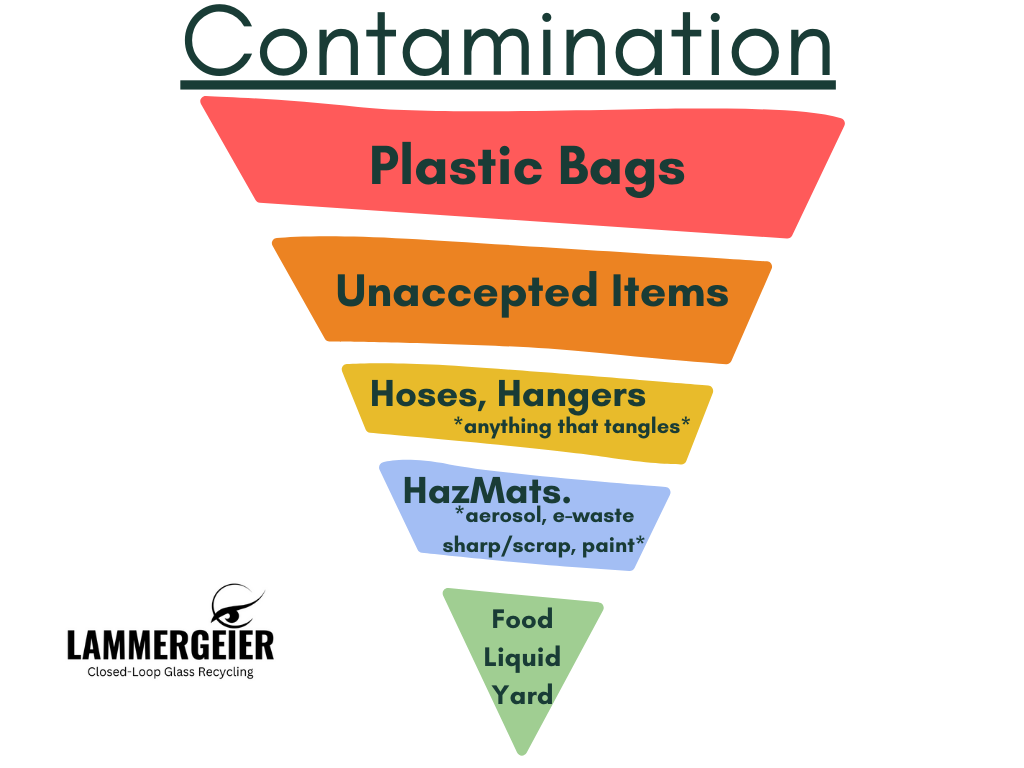What is Contamination?
When recyclable materials are mixed with items that cannot be recycled, this is called “contamination”. Since there is no universal waste management system in the United States, each city, county, state and every privately run company has their own specific set of guidelines for what can or cannot be accepted in the recycling bin. Don’t worry! We’re here to help.

Quick Fact

>>2018
Click the link above to learn more!
Click the link above to learn more!
Why Is This So Important?
Contamination is the leading cause of recyclable materials not getting recycled. Plastic bags top the list of a one item that can never be placed in a recycling bin, no matter where you live. These pesky shopping vessels can cause grave damage to recycling equipment by getting tangled in the gears and are a hazard for the workers who sort the material.
In Savannah, Georgia there’s a solution….it’s called “plarn” or a version of yarn made from plastic bags! The Savannah African Art Museum and The Morning Star Cultural Arts Group have both held local events to use this technique; making blankets out of plastic bags for the homeless citizens of our community! Check your local area, there might just be an organization doing the same thing with plastic bags to keep them from the landfill!

Ohhh Those Triangles!
If you've ever paid attention to plastic packaging or gotten caught by a family member squinting at the bottom of bottle, you know about the infamous triangles! A common misconception is if an item has one of these shapes with a number, that means it is okay to recycle. Except that's not the case! These symbols only tell you what TYPE of plastic is used to make the item but doesn't necessarily mean it's recyclable.
As frustrating as it can be, if you truly want your items in the bin to get recycled, the first step is to look at the Accepted Items list from your household waste management company. Every service provider has a detailed list on their website or one that can be found by calling their support office.
Plastic Symbol Guide

What About Hard to Recycle Materials?
How Contamination Relates to Glass
One of the biggest advantages to using a dual-stream system (separate bins) for recycling, is glass can be sorted from other recyclables. Why is this a big deal? When glass is mixed with the other materials, broken pieces and liquids can contaminate a whole batch of other recyclables! It’s also an extreme safety hazard for workers. By using a dedicated bin for glass-only, it helps improve recycling rates and ensures that our supply remains the highest quality so manufacturers can reuse it.

Savannah Single-Stream
Interested in learning more about where your curbside recycling goes once the Yellow & Black bin is picked-up?

Chatham County, GA
The 5th largest county in Georgia, Chatham County has 8 municipalities & unincorporated areas totaling almost 300,000 residents! Plus, nearly 14 million travelers visit The Hostess City each year!

Bar/Restaurants
Glass averages almost 30% of the waste stream in the hospitality industry. Reducing waste volume in the commercial sector can have huge benefits!